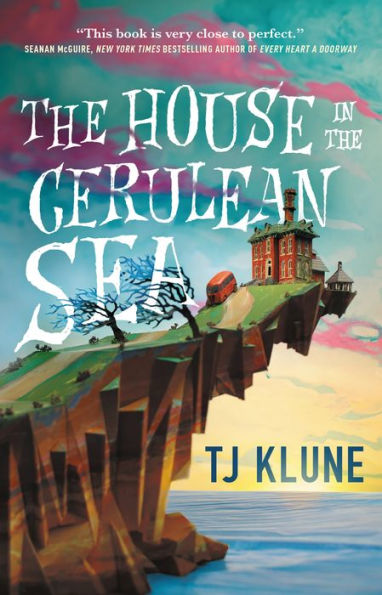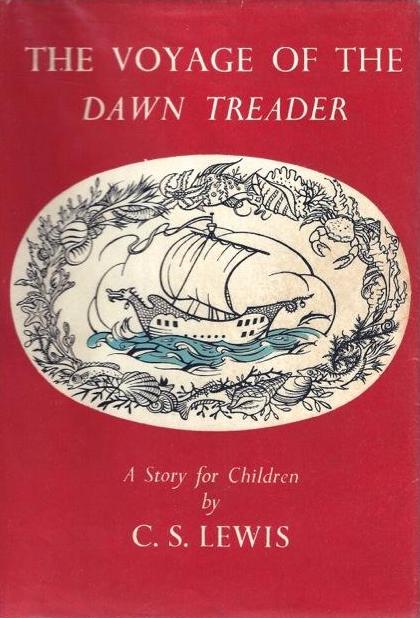The Voyage of the Dawn Treader was my least favorite Narnia book as a kid, but on this re-read it climbed the charts toward the top. I even shed a few tears before closing the book.
My problem with Dawn Treader as a kid was, well, nothing really happened. The Pevensies (plus one) appeared in Narnia, ran around on a ship for a while, then went home. There were adventures, sure, but it felt like one of my school buddies reciting their oral report at the end of summer break: I went here and this happened, and then I went here and saw this thing, and then I went home.
Unlike The Lion, the Witch and the Wardrobe or Prince Caspian, there was no bad guy to speak of (or only minor ones, gone in a chapter). There was no particularly compelling goal (“find some guys” is more or less how it translated to me as a kid), and when they did find them it was often treated as almost a footnote to whatever adventure they were on. “I guess maybe he got turned into a dragon, or maybe eaten by one, or something” or “Well, they’re sleeping forever.” Not only that, but very little of the book actually takes place in Narnia; it’s mostly in the seas beyond Narnia, at the utter ends of the world.
As an adult, I had a clearer picture of the genre going in, and I’m more widely read. Both those things helped. Since genre is largely the process of us saying “this work and that work are similar in some ways,” it’s easy to put all of the Chronicles into a single genre (let’s say “portal fantasy” or “children’s literature”) and while that’s valid, I found my reading of Dawn Treader was vastly improved by recognizing its many connections to another genre: spiritual journey and pilgrimage literature.
Buy the Book


The House in the Cerulean Sea
In a letter where Lewis lays out the basic themes of the Narnia books, Lewis says Dawn Treader is about “spiritual journey, especially Reepicheep.” It makes a lot of sense when you start comparing Dawn Treader to any number of other pilgrimage works. Especially take note of the stories of the Irish Saint Benedict, who Lewis definitely echoes, and The Travels of Sir John Mandeville, a medieval journey memoir (which Lewis loved) that includes a curious race of folks who have only one foot and rest in the shade of the foot when it’s too sunny. There are many other stories that fall, more or less, in this genre, including Dante’s Paradiso (which includes a “river of light” not unlike the drinkable ocean at world’s end), Pilgrim’s Progress, all the Irish immrama and even the Arthurian Grail quests. It’s not a dead genre, either. Semi-recent books like Eat, Pray, Love by Elizabeth Gilbert have the same basic form: Our protagonist goes somewhere unknown to them, a new place, and has adventures that spiritually transform them.
If we’re narrowing the genre to medieval travel journals, which seems completely reasonable given Lewis’s interests, the Irish immrama are a more-or-less exact pattern. A saint goes on a journey to find paradise in the farthest West (Lewis goes East, to the rising of the sun rather than its setting), and has many transformative adventures along the way, many of which take place on fantastical islands. Like Lewis’s fantasies, the immrama are often mishmashes of different mythological stories, borrowing heavily from older traditions. They are a mix of Celtic and Christian, oral and written literature, and several of the Inklings (Lewis, Williams, and Tolkien particularly) wrote about them, or adapted them, or simply enjoyed them. Immram, by the way, simply means “voyage.” Lewis literally tells us the genre in the title: The Voyage of the Dawn Treader.
One other interesting thing to note: When Lewis was writing Dawn Treader, he assumed this was to be the third and final book in the Narnia trilogy. Remember that he wrote these books quickly; all seven of them were written between 1949 and 1954. He finished writing The Lion, the Witch and the Wardrobe in ’49 and finished both Caspian and Dawn Treader before the first Narnia book hit the shelves. In a letter to an American boy named Laurence Krieg Lewis wrote, “When I had done The Voyage, I felt quite sure it would be the last. But I found I was wrong.” (In the same letter he says he thought that Prince Caspian was going to be the last, too!) Of course, before the year was out he was hard at work on The Silver Chair. Still, I think we can see some evidence of this book as the third in a trilogy, especially in the final conversation with Aslan.
Re-reading the Voyage of the Dawn Treader this month, I’ve seen it much more as a profound exploration of the desire of human beings to grow in their character, to become better people, and of the search for the divine in this life, and the hope for something beautiful in the next. It’s a deeply hopeful story, and the bits I remember most vividly from childhood (Eustace the dragon! Star people! The invisible magician!) are still as wonderful now as then… and I found the last few chapters of the book truly beautiful.
For those wanting to read along, in two weeks we’ll dive deeper into The Voyage of the Dawn Treader, so now’s your chance to read it ahead of time. Things to be watching for as you read:
- The seven missing Narnian lords (which may connect to all sorts of things: seven deadly sins, the seven virtues, seven planets of medieval cosmology, the seven “sacraments” of Lewis’s church).
- The many forms of Aslan, and the significance of when he appears.
- “Solar” symbolism (note especially sunlight, the sun, and when we see things that are gold or golden).
- Caspian and colonialism (we will likely wait to dive into Lewis’s critique of British colonialism until we get to the Space Trilogy, but there’s some interesting stuff here).
- Especially note the last three chapters in the context of someone “leaving this world.”
- What is Lewis telling us about the journey of spiritual transformation? (Pay particular attention to Eustace’s character arc.)
- Reepicheep, of course, continues to be the best mouse and perhaps greatest of the Talking Beasts.
With each new post in this series I have learned new and interesting things from you in the comments. I look forward to continuing in that tradition as we move on to the third book in the Chronicles of Narnia!
 Matt Mikalatos is the author of the YA fantasy The Crescent Stone. You can follow him on Twitter or connect on Facebook.
Matt Mikalatos is the author of the YA fantasy The Crescent Stone. You can follow him on Twitter or connect on Facebook.










